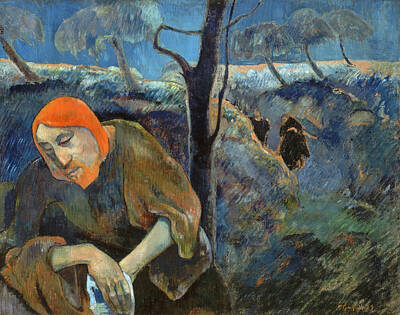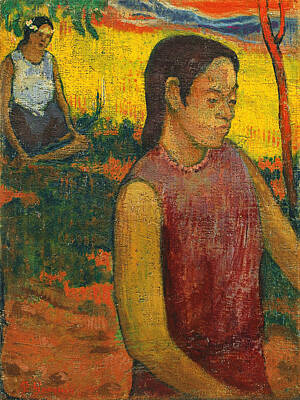.
Ο Πωλ Γκωγκέν (Eugène Henri Paul Gauguin, Παρίσι, 7 Ιουνίου 1848 – Νήσοι Μαρκησίες, 9 Μαΐου 1903) ήταν σημαντικός γάλλος ζωγράφος, εκπρόσωπος του ρεύματος του μετα-ιμπρεσιονισμού και έντονα πειραματικός καλλιτέχνης που επηρέασε τα ρεύματα της μοντέρνας τέχνης.
Θεωρείται σήμερα ένας από τους μείζονες ζωγράφους όλων των εποχών.
Flowers And A Bowl Of Fruit On A Table
Christ In The Garden Of Olives
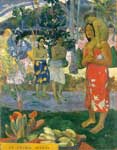


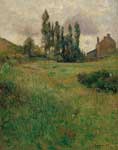



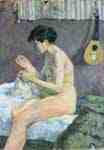
Study of a Nude (Suzanne sewing)

Old Virgins pass through a garden
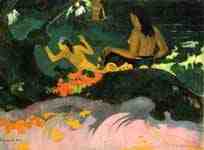
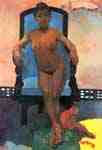

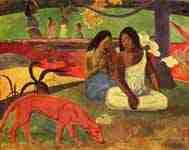
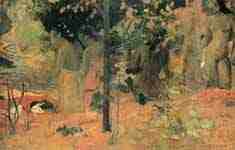
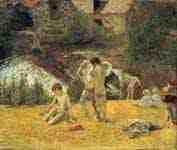
Bathers at the mill of Bois d' Amour , Pont-Aven
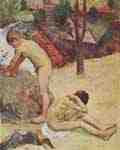
Bathins Breton boys
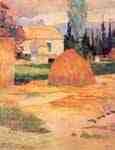

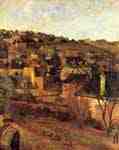

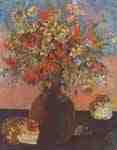
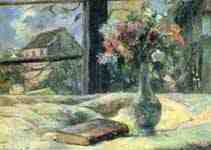
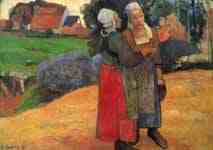
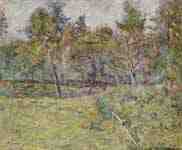
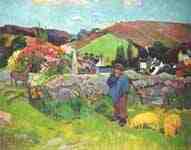
Breton Landscape With Swineherd

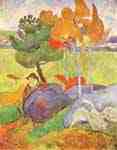
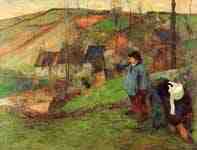
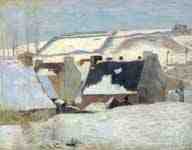
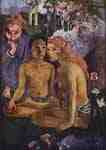
Contes barbares (Exotic Sagas)

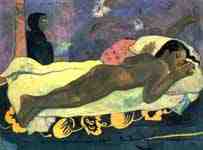
The spirit of the dead wakes ( Manao Tupapau )
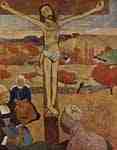
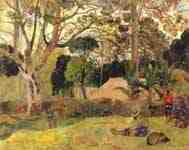
The Green Christ
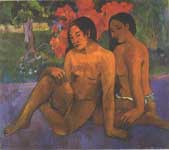
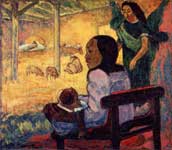
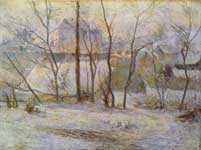
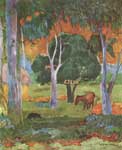

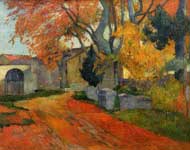
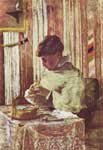
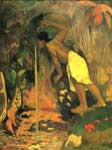
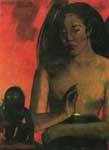
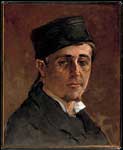
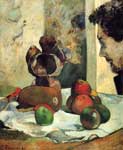
Still Life with Profile of Laval

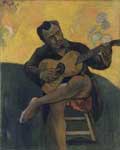
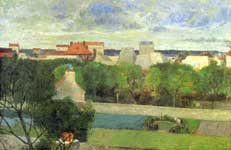
The Market Gardens of Vaugirard
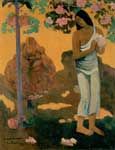
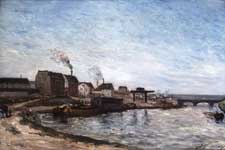
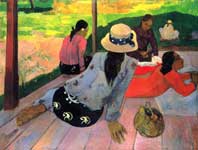
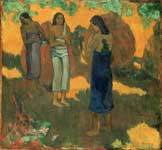
Three Tahitian Women Against a Yellow Background
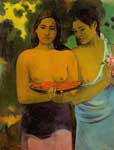
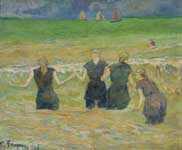
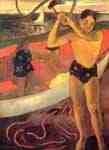
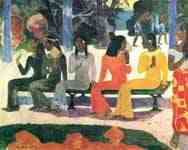

The Moon and the Earth ( Hina Tefatou )
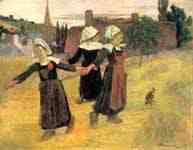
The dance of the little Breton Women


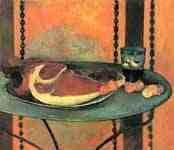
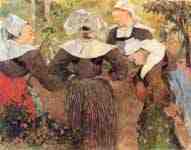
The Dance of the Four Breton Women
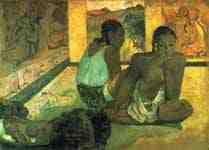
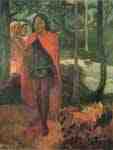
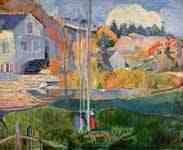
The David - mill in Pont -Aven

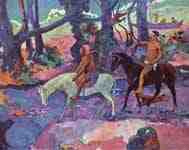
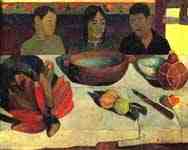
The Meal ( Still life with bananas)
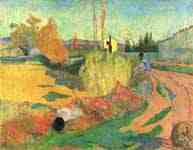
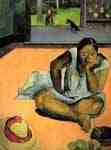
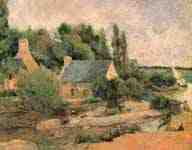
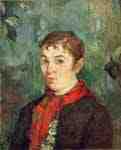
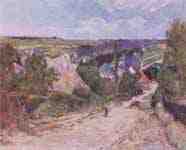
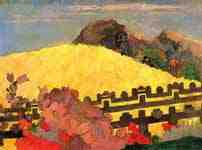
There is the temple ( Parahi te marae )



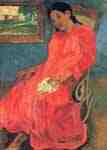
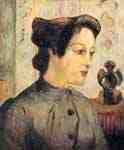
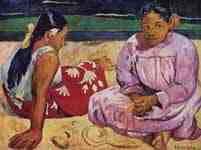
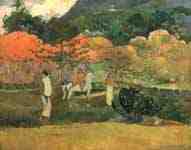

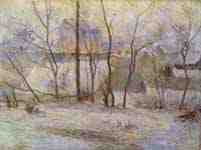

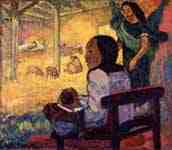

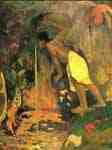
Mysterious source ? ( Pape moe )

Vegetable farmers in Vauguirard

Large Bouquet with Tahitian children
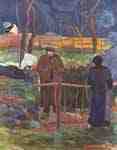
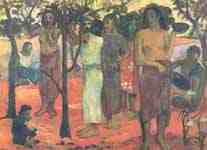
Wonderful days ( Nave nature mahana )

Gorgeous secret ( Nave nature moe )
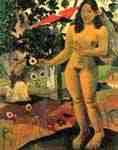
Gorgeous Country (Te nature nature fenua )
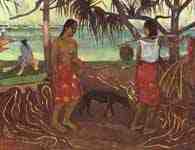
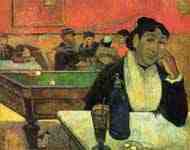
In the cafe ( portrait of Mme Ginoux )
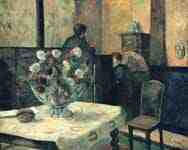
Interior of the painter in the Rue Carcel
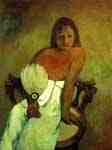
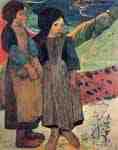
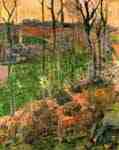
Young Breton, the wooden shoe adjusting

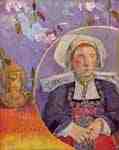
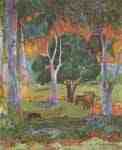
Landscape on La Dominique ( Hiva Oa )
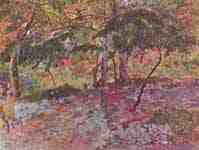

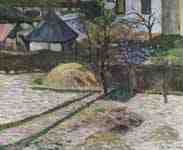
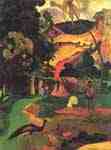
Landscape with peacocks ( Matamoe )
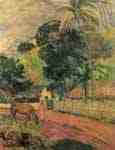
Landscape ( horse on the way )
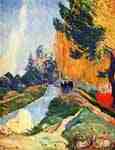
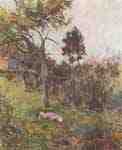
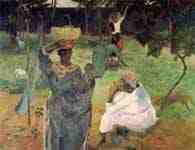
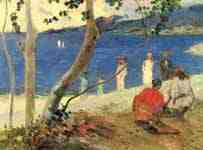
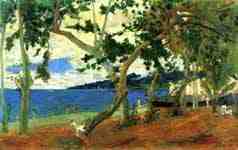
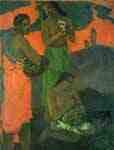
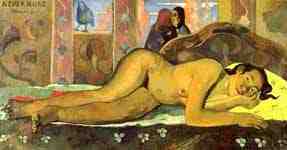

Nirvana , Portrait of Meyer de Haan

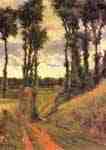

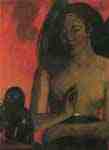
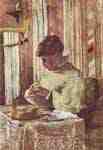

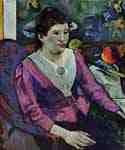
Portrait of Marie Derrien Lagadu
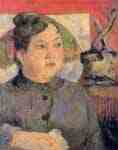
Portrait of Mme Alexandre Kohler

Portrait of Mme Gauguin in evening dress
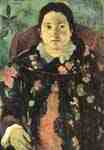
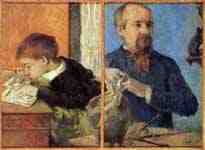
Portrait of the sculptor Aubé with his son

Portrait of Vincent van Gogh, painting Sunflowers
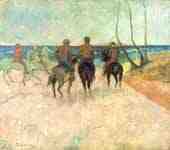
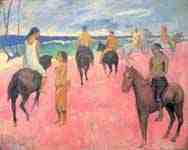
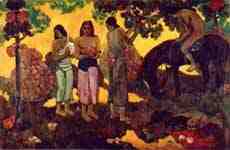

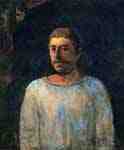
Self-portrait » près du Golgotha "
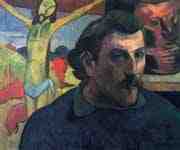
Self-Portrait with Yellow Christ
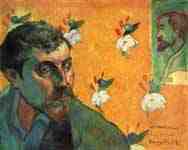
Self-Portrait " Les Misérables "
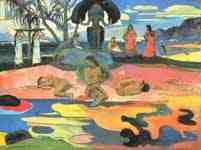
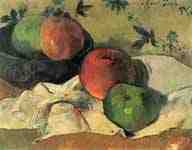
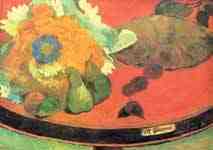
Still life » à la fête Gloanec "

Still life with apples , pear and jug

Still Life with Profile of Charles Laval
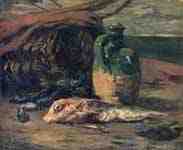
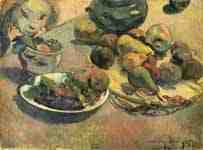
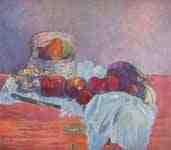
Still life with fruits , basket and knife
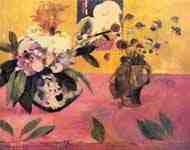
Still life with Japanese woodcut
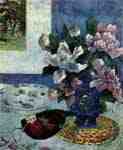
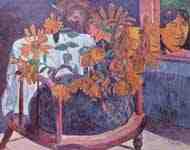

Still life in front of an engraving by Delacroix



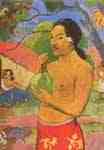
Tahitian woman with fruit , detail

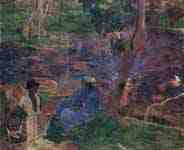
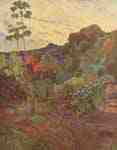

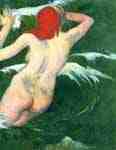
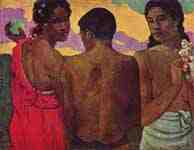
Entertainment in Tahiti
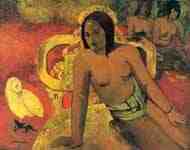
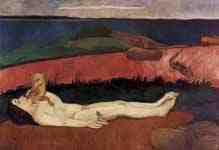
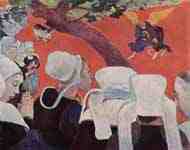
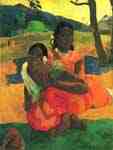
When are you getting married? ( Nafea faa ipoipo ? )
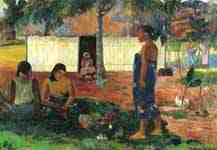
Why are you angry ? ( No te aha oe riri ? )
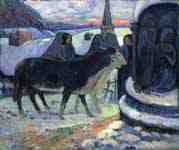

What ? Are you jealous ? ( Aha oe feii ? )
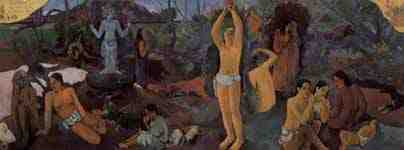
Where did we come from? Who are we? Where are we going ?
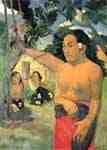
Where are you going ? ( E haere oe i hia ? )

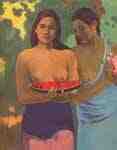
Drawings


Breton peasants with cattle and dog
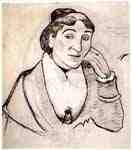
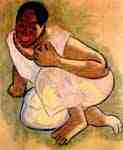
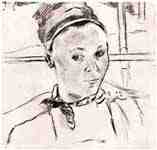
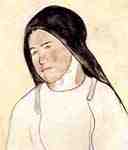
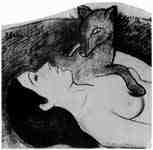
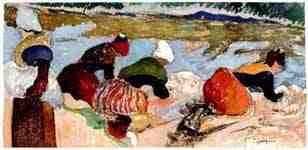
Illustrations
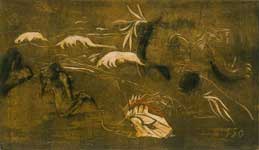
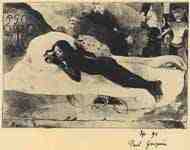

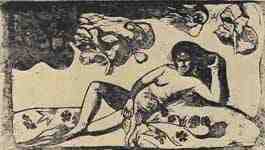
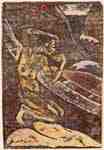
Drinking fisherman next to his boat
Ζωή και έργο
Ο Γκωγκέν, με καταγωγή από Ισπανούς αποίκους στη Λατινική Αμερική, γεννήθηκε στο Παρίσι αλλά πέρασε τα παιδικά του χρόνια στη Λίμα. Σπούδασε στην Ορλεάνη της Γαλλίας και αμέσως μετά ταξίδεψε ανά τον κόσμο με εμπορικά πλοία και αργότερα με το Γαλλικό Ναυτικό για ένα διάστημα περίπου έξι ετών. Επέστρεψε στη Γαλλία το 1870, όπου και δούλεψε ως βοηθός χρηματιστή. Παράλληλα με αυτή την ιδιότητά του, ο Γκωγκέν περνούσε μέρος του χρόνου του ζωγραφίζοντας με τον Καμίλ Πισάρο και τον Σεζάν. Αν και οι πρώτες προσπάθειές του ήταν αδέξιες, σημείωσε σταδιακά αξιοσημείωτη πρόοδο. Μέχρι το 1886 ο Γκωγκέν βρίσκονταν σε επαφή με τους ιμπρεσιονιστές καλλιτέχνες και συμμετείχε με έργα του στις εκθέσεις τους τα έτη 1876, 1880, 1881, 1882 και 1886.
Το 1884 μετακόμισε με την οικογένειά του στην Κοπεγχάγη, όπου προσπάθησε να ακολουθήσει — χωρίς επιτυχία — επαγγελματική σταδιοδρομία στις επιχειρήσεις. Τελικά, επέστρεψε στο Παρίσι το 1885, αφήνοντας την οικογένειά του στην Δανία και αποφασισμένος να αφοσιωθεί ολοκληρωτικά στην ζωγραφική. Χωρίς επαρκείς πόρους επιβίωσης, η σύζυγος και τα παιδιά του επέστρεψαν στην οικογένειά της.
Ο Γκωγκέν με τον Βίνσεντ βαν Γκογκ
Την περίοδο 1886–1891, ο Γκωγκέν έζησε κυρίως στην περιοχή της Βρετάνης, όπου ζούσαν επίσης αρκετοί πειραματικοί ζωγράφοι που εντάσσονται συχνά στη λεγόμενη «Σχολή της Pont-Aven». Επηρεασμένος από τον ζωγράφο Εμίλ Μπερνάρ, ο Γκωγκέν μετάβαλε σημαντικά το ύφος της ζωγραφικής του. Τα κύρια χαρακτηριστικά γνωρίσματα της ζωγραφικής του έγιναν η χρήση μεγάλων επιφανειών και έντονων χρωμάτων. Ο Γκωγκέν δήλωνε πλέον απογοητευμένος από τον ιμπρεσιονισμό και στράφηκε περισσότερο στην αφρικανική τέχνη και την τέχνη της Ασίας. Παράλληλα, ήρθε σε επαφή με το έργο του Βίνσεντ βαν Γκογκ, περίπου το 1888, το οποίο και αναγνώρισε ως ιδιαίτερα σημαντικό. Με τον βαν Γκογκ συνδέθηκε φιλικά και τον επισκέφθηκε για ένα διάστημα δύο μηνών στην Αρλ. Τόσο ο Γκωγκέν όσο και ο βαν Γκογκ έπασχαν από κατάθλιψη και η συγκατοίκησή τους κατέληξε σε έντονη διαμάχη, με τελική συνέπεια ο βαν Γκογκ να κόψει μέρος του αριστερού αυτιού του, αφού προηγουμένως είχε απειλήσει να σκοτώσει τον Γκωγκέν.
Σε κακή ψυχολογική κατάσταση, ο Γκωγκέν εγκατέλειψε την Ευρώπη το 1891, για να ταξιδέψει στην Πολυνησία. Αρχικά εγκαταστάθηκε στην Ταϊτή και αργότερα στις νήσους Μαρκησίες (Μαρκέσας ή νήσοι Μαρκησίας). Εκεί πέρασε σχεδόν όλη την υπόλοιπη ζωή του, πραγματοποιώντας μόνον μία μόνον επίσκεψη στην Γαλλία. Τα έργα της περιόδου αυτής θεωρούνται ίσως τα καλύτερα δείγματα της δουλειάς του και ξεχωρίζουν για τον έντονο συμβολισμό τους και τον πολλές φορές θρησκευτικό χαρακτήρα τους, εμφανώς επηρεασμένος από τον πολιτισμό των ιθαγενών της Πολυνησίας. Το σύνολο του έργου του Γκωγκέν, και κυρίως οι πειραματισμοί του γύρω από τη χρήση των χρωμάτων, θεωρείται πως επηρέασαν σημαντικά τα καλλιτεχνικά ρεύματα του 20ού αι. και ειδικότερα τον φωβισμό. *
Hellenica World - Scientific Library
Από τη ελληνική Βικιπαίδεια http://el.wikipedia.org . Όλα τα κείμενα είναι διαθέσιμα υπό την GNU Free Documentation License



